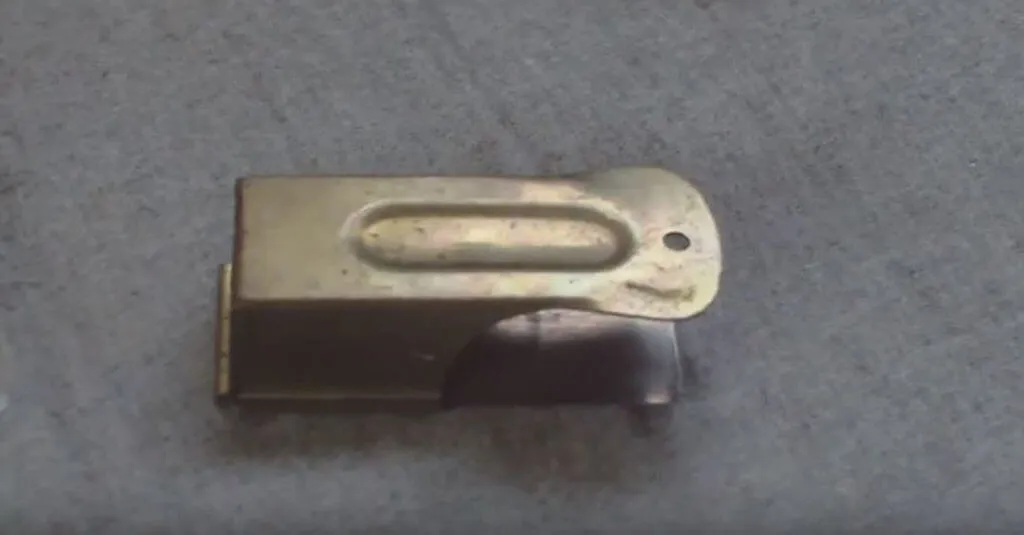Clever D-Day Inventions That Made The Invasion A Success
June 6, 1944, was the day that changed the direction of World War II in the Allies' favor. On that day, over 156,000 Allied troops stormed the beaches of Normandy toward almost certain death in the name of freedom. Although there were at least 10,000 Allied casualties, the mission was still considered a success. Even though much can be attributed to the bravery and sacrifice of the soldiers involved, the inventions designed for the invasion are what made the mission possible. Discover what the military devised and unveiled on D-Day that made the largest sea-to-land invasion ever feasible, and ultimately won the war.
The Tide-Prediction Machine Identified The Best Days For The Invasion
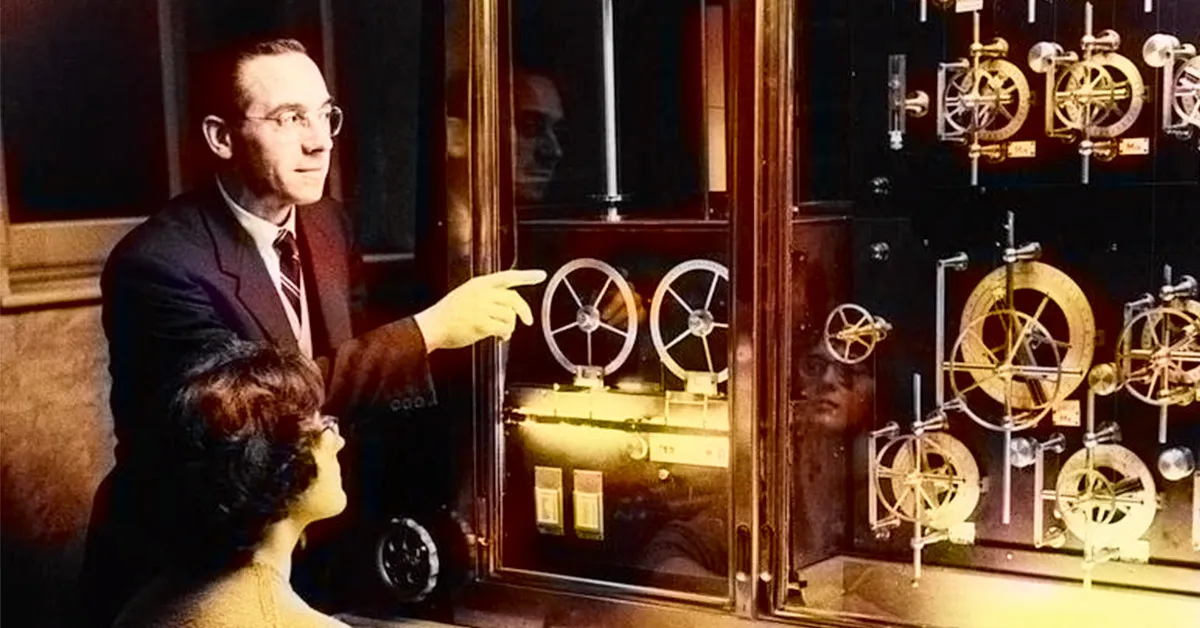
When it came to planning the landing on the beaches of Normandy, the moon and the tides played a critical role. Air operations needed clear skies and a full moon for visibility, the navy required calms waters, and the infantry required a low tide to expose German defenses. Such an invasion needed perfect conditions across the board for all aspects of the military.
So, British mathematician Arthur Thomas Doodson got to work on perfecting old tide-predicting machines. In 1944, he announced the best time for the invasion to be between June 5th and 7th. The attack took place on June 6.
Horsa Gliders

Horsa Gliders were designed in 1942 and played a key role in airborne assaults from D-Day until the end of World War II. The gliders were used to transport heavier equipment that could not be delivered using a parachute drop. The hinged nose and removable tail allowed for easy packing and unloading -- a feature that was crucial during the D-Day invasion.
The only issue was that the gliders were not structurally sound. They were constructed mostly of wood and fabric, making them difficult to operate. Many of the gliders broke apart when landing, especially during improvised landing.
The DDs Were Floating Tanks
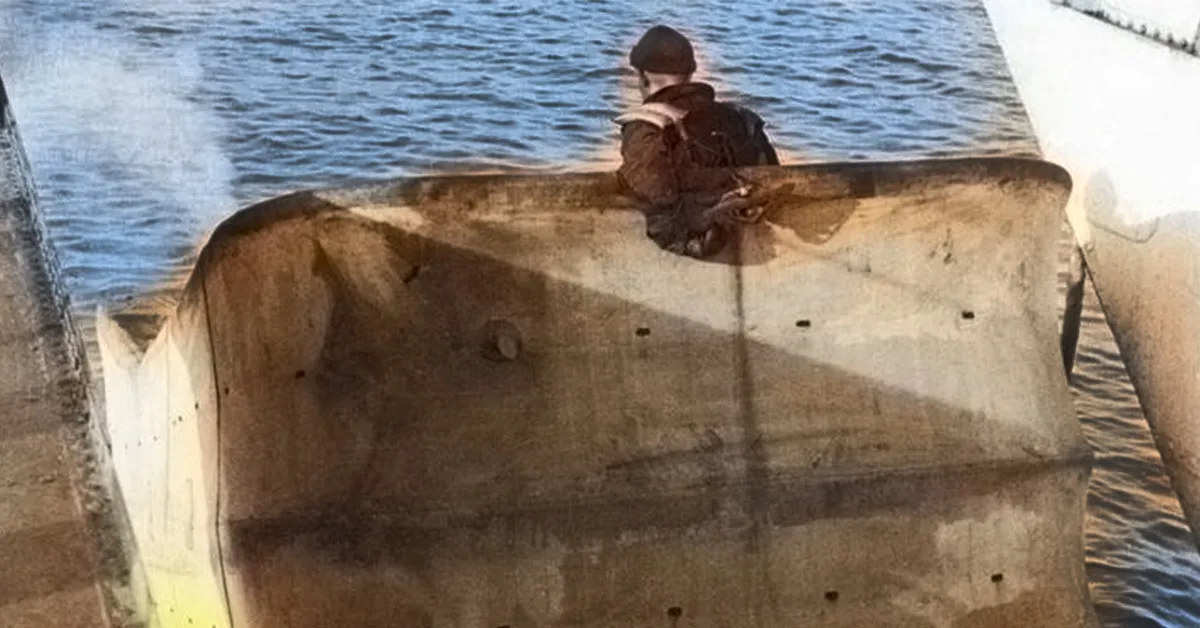
Another invention designed for the invasion of Normandy was the DD Swimming tank. Since driving tanks straight off of a landing craft could be risky, the DD tanks helped to minimalize this danger. Designed by Hungarian inventor Nicholas Straussler, they were named DD for their "Duplex Drive" engines which powered tracks on land and propellers while in the water.
However, they were dangerous to ride in because they had a canvas screen which was supported by an air-filled frame of rubber tools which held it afloat while in the ocean. The screen could also be collapsed by soldiers once they reached land in order to expose the rest of the tank.
The Sherman Flail Tank
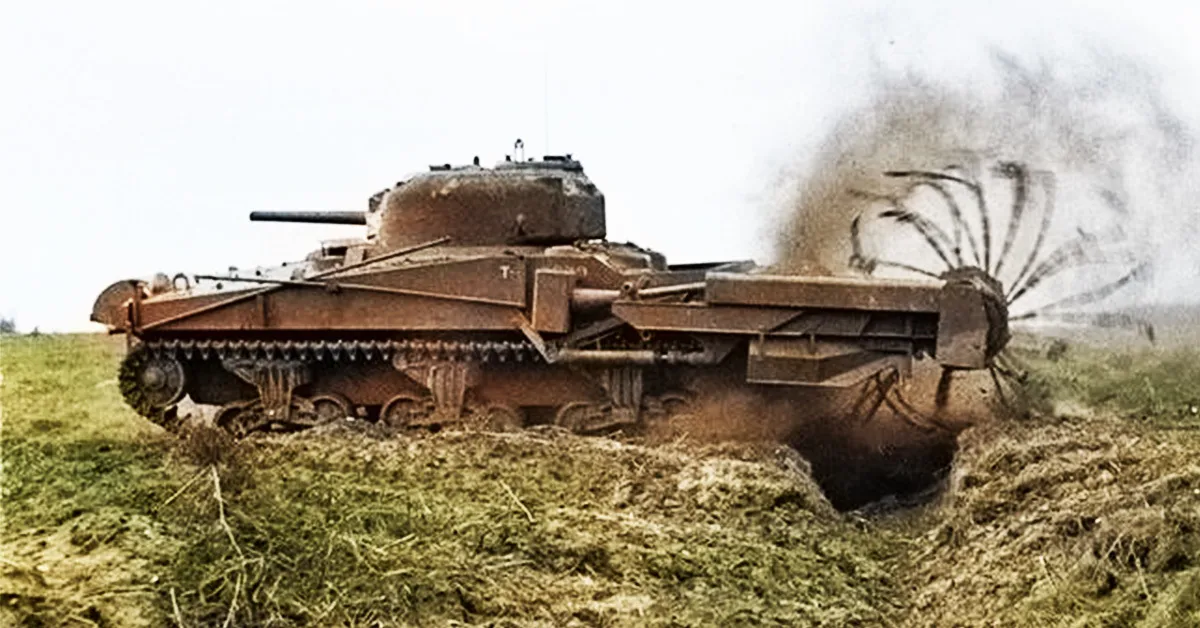
The Sherman flail tank or "Crab" was a standard Sherman tank, however, on the front it was had a giant spinning drum. This drum would spin at more than 140 rpm with chains all around that would beat into the ground as it moved. The impact of the chains digging into the ground would detonate any mine under the tank up to nine feet deep.
Infantry and other tanks would follow behind the flail tank so they wouldn't have to worry about setting off any mines. Not only did the tanks detonate mines but they also cut through barbed wire and other obstacles that got in their way.
The Allies Created Their Own Harbors

After D-Day, it was crucial that the Allies had a constant resupply of men and equipment into Normandy to keep the momentum of the invasion. From past military ventures, the Allies also knew the importance of securing harbors and ports to protect ships and equipment from rough seas, as well as easily ferry men and gear in and out.
So, when planning D-Day, the Allies came up with the idea to create their own artificial harbors called Mulberries. This was done by sinking old ships and concrete structures and adding floating roads and piers to emulate what actual harbors do and look like.
A Pipeline Under The Ocean Kept The Allies Fueled Throughout The Invasion
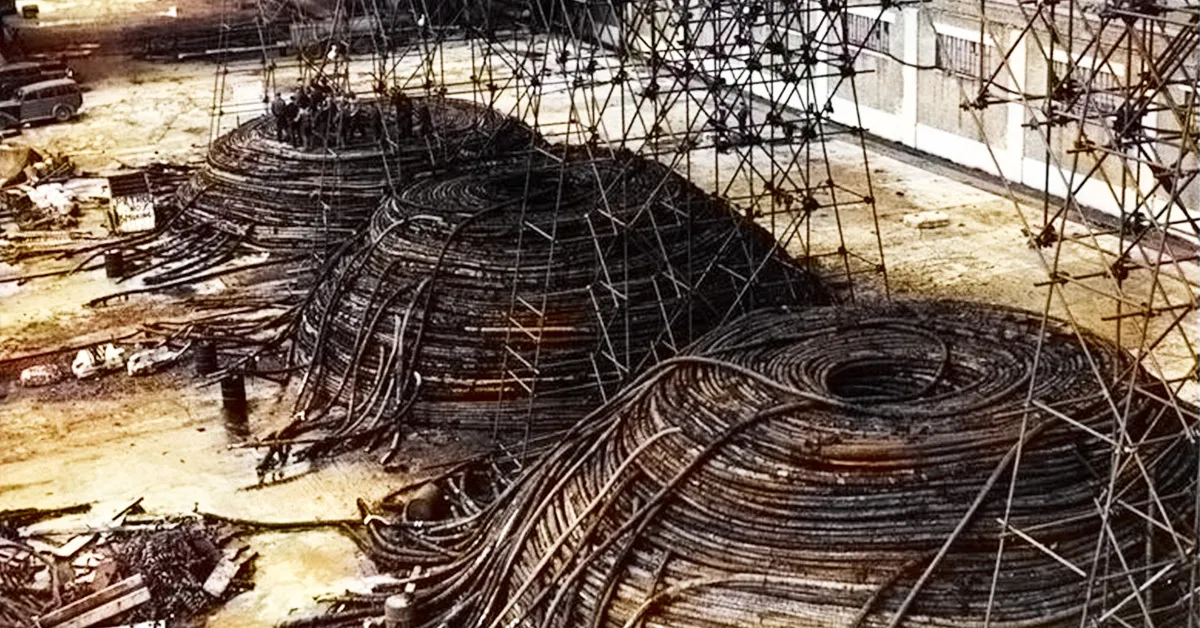
The Pipeline Under the Ocean (PLUTO) was used to supply petrol from Britain to Europe through a series of underground flexible pipes. The petrol was used to fuel aircraft and other vehicles needed during the invasion, and to make sure that the whole thing didn't come to a halt on account of running out of fuel. The pipes ran from the Isle of Wight to Port-en-Bessin, one of the connecting points between Omaha and Gold beaches.
After the invasion, another pipeline was added by the Allies during their advance across Europe. The pipeline was only three inches wide and was wound around in spools called conundrums, which were unspooled as the Allies moved forward.
Hobart's Funnies And Other AVREs Changed The Way Tanks Were Used

Hobart's Funnies were specialized vehicles that were designed to perform specific tasks. The Allies knew that in order to invade a beach, they were going to need armored vehicles that did more than just shoot bullets and rockets on land. Named after their inventor Major-General Sir Percy Hobart, they were heavily armored vehicles designed to reinforce the infantry on D-Day both in the water and the beach.
They ranged from swimming tanks known as "Crocodiles" with flamethrowers attached to AVRES (Armoured Vehicle Royal Engineers), which were tanks with specialized devices. One particular AVRE laid matting down on the beaches so other tanks could drive across with ease.
The Germans Were Prepared With Their Own D-Day Defenses
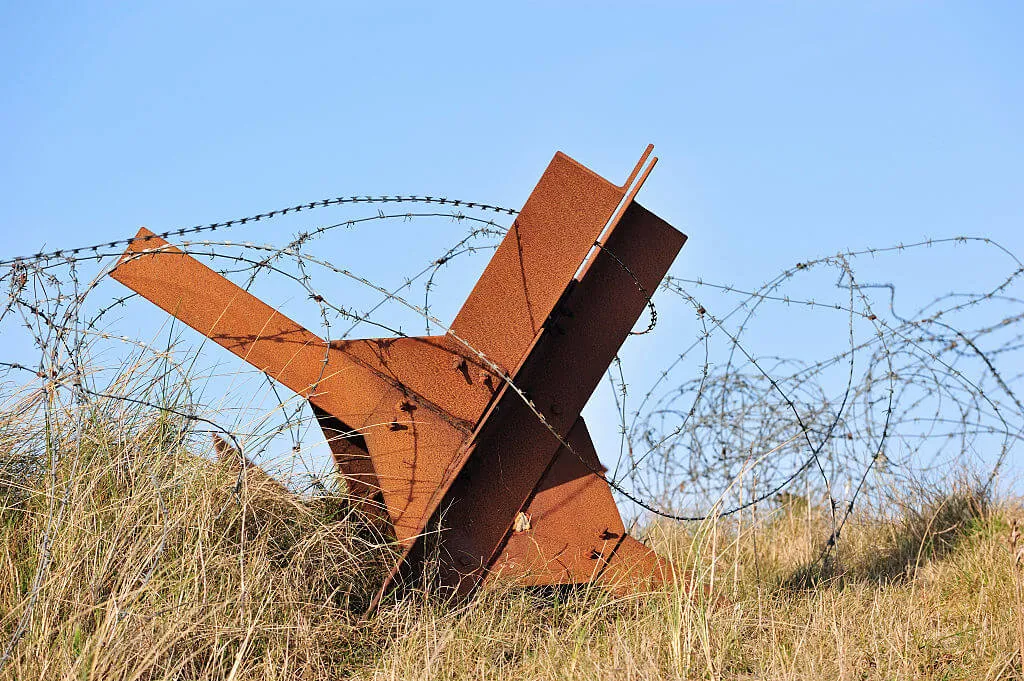
The Allies weren't the only ones to invent equipment in preparation for D-Day. On the German side, Field Marshall Erwin Rommel was put in charge of the defense of Normandy. He believed that an attack would take place during high tide, when the Allies would be under German fire for the least amount of time.
So, he designed a series of underwater obstacles called "hedgehogs" that would be unseen during high tide. They had the capability of ripping into the bottom of landing craft, with many of them also fit with explosives. To stop gliders, Rommel implemented a series of large posts that blocked off open areas for landing known as "Rommel's Asparagus."
The D-Day Cricket Helped Paratroopers Communicate
Although initially made as a childrens toy, the United States Army took the concept and tweaked it. They discovered that it could be a useful tool as a form of communication for the 101st US Airborne after dropping into France on D-Day. Paratroopers would be spread out far distances from one another, so communication was vital.
When you squeeze the two pieces of metal together, it makes a click-clack noise, so the airborne wouldn't have to talk to communicate or find each other's positions. Only the 101st Airborne Division was given this piece of equipment, and the crickets were only used after their first jump on June 6, 1944.
Landing Craft (Higgins Boats) Carried Men, Supplies, Weapons, And More

With a sea-to-land invasion of such scale, getting troops, supplies, weapons, and vehicles onto the beach quickly was of utmost importance. So, thousands of landing craft were designed to carry the thousands of soldiers and all necessary equipment across the English Channel and directly onto the beach. These ranged from craft carrying groups of infantry to entire ships full of tanks and other vehicles.
Developed by inventor Andrew Higgins, the craft were designed to pull up directly onto the beach which other watercraft would not have been capable of doing. Eisenhower credited these craft with winning the war. Although these kinds of craft were being developed and used at the beginning of the war, they had never been used in such force as they were on D-Day.
Bangalore Torpedos Rendered Barbed Wire Obsolete

Invented by the British Army in 1912, Bangalore torpedos saw their most extensive use by the United States Army during D Day. The idea behind the torpedos are simple; a soldier fills a metal pipe with explosives. The pipe can then be attached to multiple sections to navigate its way through barbed wire and minefields.
Without taking advantage of this surprisingly simple weapons technology, American soldiers would have been sitting ducks waiting for death to come on the beach at Normandy. Bangalore torpedoes proved so successful during the invasion, that they're even still used by the military today!
Two And Half Ton Trucks Were The Backbone Of The American Invasion

During DD, the troops needed some way to run supplies from the beach to the troops. With that in mind, the two and a half ton truck was mass produced. Over half a million of these heavy metal trucks were made, and many historians consider them the most important piece of equipment used during DD.
Amazingly, while these trucks were rated to carry cargo up to two and a half tons, they routinely transported loads double that. They became so vital to the war effort that an amphibious version was invented for use at Normandy.
The P-47 Thunderbolt Had Free Range Over German Troops
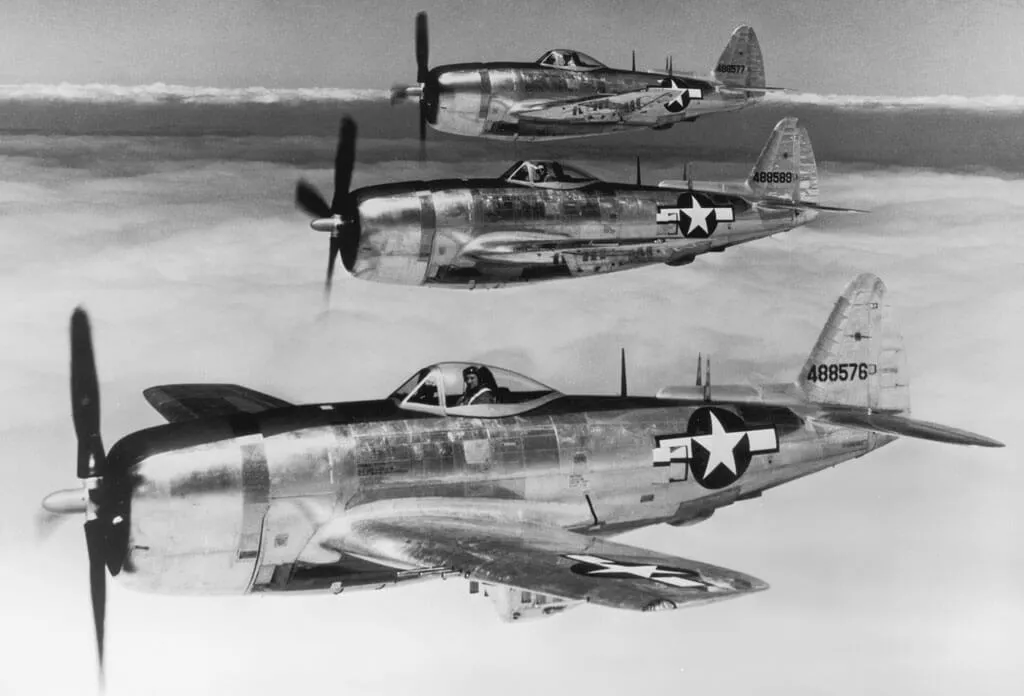
Developed in 1939 by Georgian immigrant Alexander Kartveli, the P-47 Thunderbolt fighter aircraft quickly became one of the Allies most important weapons during the war. Flying above German troops and mounted with bombs and machine gun turrets, the heavy aircraft made life a nightmare for German reinforcements on the beach.
Making matters worse for the German army, the Thunderbolt was heavily armored. It could take a massive beating and still complete its mission and fly back home. After the war was over, the Thunderbolt continued to be used by the military and several are still in pristine condition today.
The M3 "Grease Gun" Was Easily Mass Produced

In 1943, the M3 "Grease Gun" went into production. The crude weapon was cheap to produce and proved highly effective for Allied forces. The weapon was nicknamed "Grease Gun" for it's resemblance to the tool. Over 620,000 of M3s were produced during the war and quickly replaced the harder to manufacture Thompson M1.
The gun was fully automatic and could cycle 450 rounds per minute. In total it weighed about eight pounds and became standard issue for soldiers during DD. A variant of the M3, the M3A1 was introduced after WWII and used by American troops during the Korean War.
The M1 Steel Helmet Was Standard Issue On D Day

Designed to be worn with a helmet liner, the M1 most closely resembled a steel pot that soldiers would put on the head. There was a suspension system inside the "pot" that could be adjusted for individual head size and the outer steel shell could be easily covered with extra material.
At the time of its introduction, the helmet was considered relatively heavy but was also extremely effective. After D Day ended, the M1 Steel helmet continued to be used by the military for the next 40 years!
Nylon Became A Critical Material In The War Effort

Designed by the DuPont company in 1937 to replace silk in women's stocking, nylon ended up playing a critical role during D Day and WWII. Advertised as a material that was just as strong as steel, nylon became the main material used to make parachutes, flack jackets, glider tow ropes, and aircraft fuel tanks!
True to the promise, the new material was cheap to produce and wouldn't rear as easily as its delicate counterpart. Nylon became so important during the war it was unavailable for purchase in the states and women began drawing lines down the backs of their legs to make it look like they were wearing nylon stockings.
Th A-11 Wristwatch May Have Won The War

Without the invention of the A-11 heavy-duty wristwatch in during WWII, who knows if Allied forces would have won the war. The watch was designed to take a beating without losing functionality, which was vital during timed attacks and other events.
Without accurate and synchronized timekeeping, soldiers wouldn't be able to log events accurately, or time explosive detonations correctly. The German's had their own service watches, the B-Uhren, which was designed for ease of manipulation, helping set it apart from the A-11.
An Important Battle Rifle

Having an advantage in your choice of weapons can be pivotal in winning a war. The American forces were triumphant as far as that goes because they had the only semi-automatic rifle used at Normandy. It was called the M-1 Garand. British forces had the Lee-Enfield (SMLE).
The SMLE was similar to the bolt action rifle the Germans used called the Mauser K-98, but it had 10 rounds opposed to the Mauser's five. These weapons provided the allied men with a great edge over the Nazis.
Fire From The Sea

It's a tricky game when you're switching between sea and land during wartime. Going between the two can and will leave you vulnerable with or without your permission, but thankfully, There was a way to help with that.
During the Normandy landings, there were five battleships, 20 cruisers, and 65 destroyers. Their missions were simple; provide covering fire as the troops landed on solid ground. In many scenarios, the destroyers would pull up as close to the beach as possible to destroy machine gun nests.
Thank You, Radar

Radar technology first surfaced in the '30s thanks to Arnold Wilkins and Robert Watson. They needed it for threats in the air that were becoming more and more pressing. During WWII, this invention would prove to be pivotal.
Historians say that the defense radar provided to the British ultimately helped them win the battle. The Germans focus was on bombing cities and should have been on taking out the stations along the coast. This allowed the British to spot bombers up to 100 miles away.
No More Troubles At Night

Night vision made its first appearance as early as 1939. By the end of World War II, German forces had given 50 Mark V Panther tanks the gift of night vision. The gear was used for the first time in battle back in 1945.
Around 310 pieces were delivered to the Wehrmacht when the war was in its final stages. War veteran reports consisted of snipers who were shooting at night. The snipers had support from non-shining torches along with huge optical sights mounted on top.
Easy Fuel Transportation

At the request of Hitler, the Germans created an easier way to transport fuel by hand. The jerrycan was invented with a clever design that was reverse engineered by the allies to replace their existing canisters because the ones they had were easy to puncture.
This new design with three handles made it easier for it to be carried by one or two people. The whole point of it was to make it easier and that is what they accomplished after reverse engineering the design.
A Need For More Rubber

When one group pretty much monopolizes a resource that you need, you're forced to come up with alternatives. That's what the allies did thanks to the Axis having control over most of the world's supply of natural rubber.
The Allies were in desperation mode and decided to increase their production of synthetic rubber. Waldo Semon made Ameripol in 1940. What that is exactly is a cheaper way to produce the synthetic rubber and it quickly helped meet the needs of the Allies.
The Helicopter

The worlds first series production of a helicopter was the Flettner FI 282 Kolibri or Hummingbird. It was a single-seat open cockpit Anton Flettner of Germany invented during WWII as a means to carry items between ships and for aerial reconnaissance.
Soon, they wanted to use the carrier for other purposes. Mainly, the Luftwaffe wanted it to be used on the battlefield. A seat was added to the rear and was called the B-2 version.
Say Hello To The M1917

This machine was designed for the first World War but didn't much action. It did, however, have immense durability and accuracy so American forces used it during the second world war and in Korea.
This machine was pretty heavy as well. It weighed 32.6 pounds while it was empty. That jumped up to 41 after you added eight pints of water into the cooling jacket. And the tripod you hooked it up to weighed 53 pounds. This wasn't something you would lug around with ease.
The Carbines

This small, and short rifle fired a reduced-power cartridge. This weapon was partially designed in prison by David Williams, it was a gas-operated gun with a 15 round detachable magazine. The catrridge size was smaller than rifles and machine guns so that made its range and penetration lack a little.
This was the main reason why they weren't used to replace rifles but pistols instead, especially among officers and crews with a lot of vehicles. Some questioned equipping people with these weapons, but the officers liked how lightweight they were.
Did You Pass The BAR?
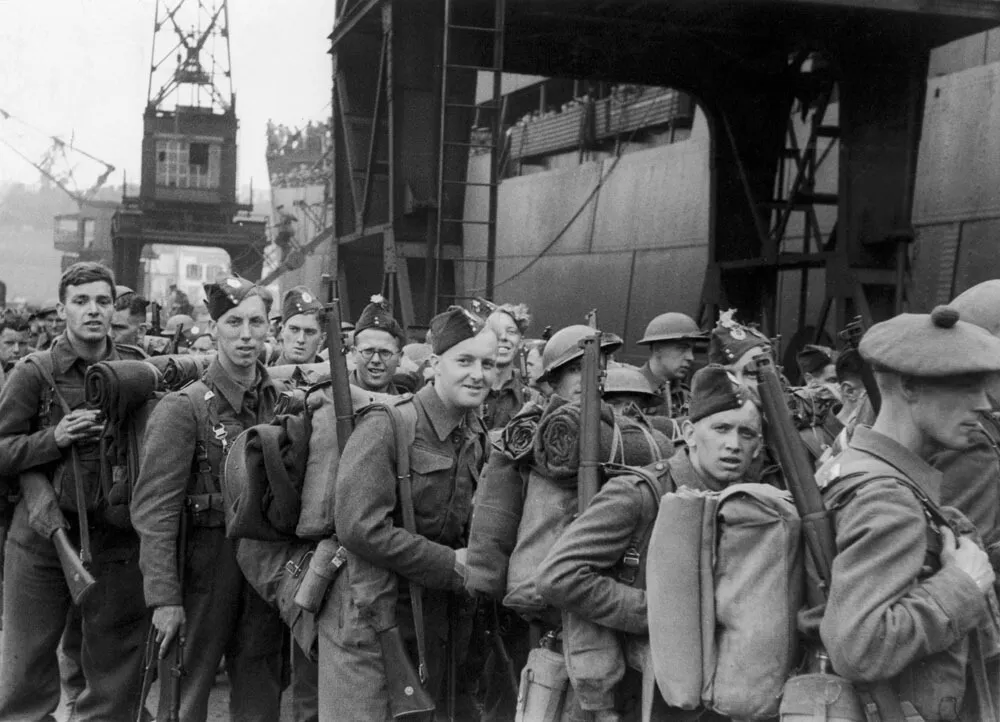
BAR is short for Browning Automatic Rifle. It had portable firepower but was rarely used during WWI. It wasn't until the second world war that it would see a great improvement. The WII version of the gun was full auto with slow and fast cycles.
The BAR gave Americans a base of fire for their infantry squad. This allowed the riflemen to move around while the BAR suppressed enemy fire.
A Need For A Light Machine Gun

In the days of WWI, it was evident that the need for a light machine gun wasn't going anywhere soon. That's when the M1919 stepped up to the plate. It was almost the exact same as the M1917 that we mentioned earlier.
The advantage of this machine gun was that it was way lighter due to the removal of the water jacket and water. This led to only needing two soldiers as opposed to the three needed for other light machine guns. This was a popular gun all way to the Vietnam War that helicopters would use often.
Innovation At Its Finest, Guided Weapons

Ever heard of in-flight guidance onto a moving target? This was an innovation that arrived during WWII. One of the earliest examples of this was the Fritz X anti-ship bomb. The operator of the launch guided the Fritz to a target using radio control.
The Fritz sank an Italian Battleship as a result. This was first used by the Germans, but the American Navy developed a far more advanced version called the Bat. IT used radar to eliminate the need for human operation.
Fashion Designer Bill Blass Helped Develop Inflatable Tanks

The US Army’s 603rd Camouflage Battalion was composed of creative talents such as writers, theater technicians, admen, and other artists. Fashion designer Bill Blass was part of this Battalion, whose mission was to develop ways to trick the German Army into thinking that the invasion would take place somewhere other than Normandy.
This operation took place with the use of artistic props such as fake airplanes, costumes, and inflatable tanks that were positioned in strategic locations to give the impression that an invasion was about to take place. The clever inflatable tanks also made it look like the Allies had more troops than they did.
"Window" Confused Radar Detection Equipment

By WWII, radar equipment was commonly used to detect enemy forces. In 1942, a telecommunications expert came up with the idea to drop slats of aluminum from aircraft, which would cause a “cloud of false echoes” to anyone monitoring with radar.
These pieces of metal were called “Window” or “chaff” and they worked by cutting a radar signal’s wavelength in half. Enemy forces could not tell the difference between the echoes caused by chaff and an actual aircraft. Windows are still in use by modern armed forces today.
Torches That Don't Need Batteries
The use of dynamo-powered torches during WWII helped overcome the lack of electricity or other power sources. These flashlights used a person’s muscle power to generate electricity, by either winding a crank or squeezing a lever. The most common versions used in the war used a squeeze handle mechanism, which was attached to a dynamo and a lightbulb.
Dynamo-powered torches and flashlights are commonly used today as essential items in emergency kits. The technology is also popular in AM/FM radios, flashing lights, and emergency sirens.
Penicillin Saved Many Lives

First discovered in 1928, penicillin was first mass-distributed during WWII. The United States produced more than 2 million doses of the antibiotic in time for the Normandy invasion. Penicillin is estimated to have prevented death or amputation for between 12 to 15 percent of wounded troops during the war.
This photo depicts a soldier, British Pvt. F. Harris, after he’s been wounded during the Normandy invasion. The medic is about to inject him with a dose of potentially life-saving penicillin.
Jet Propulsion Engines

A Royal Air Force air officer named Frank Whittle filed a patent for a jet engine in 1930. When WWII threatened, the government stepped in to support further development of the technology. The first jet powered by a Whittle gas turbine was the Gloster E28/39 (pictured above). It first flew in 1941.
In jet propulsion, air enters a front chamber of the plane and enters a combustion chamber where it is mixed with fuel. This creates gases which are then expelled through the rear of the aircraft. Whittle's technology gave credence to the fact that planes could be powered by means other than propellers.
Money Or Playing Cards?
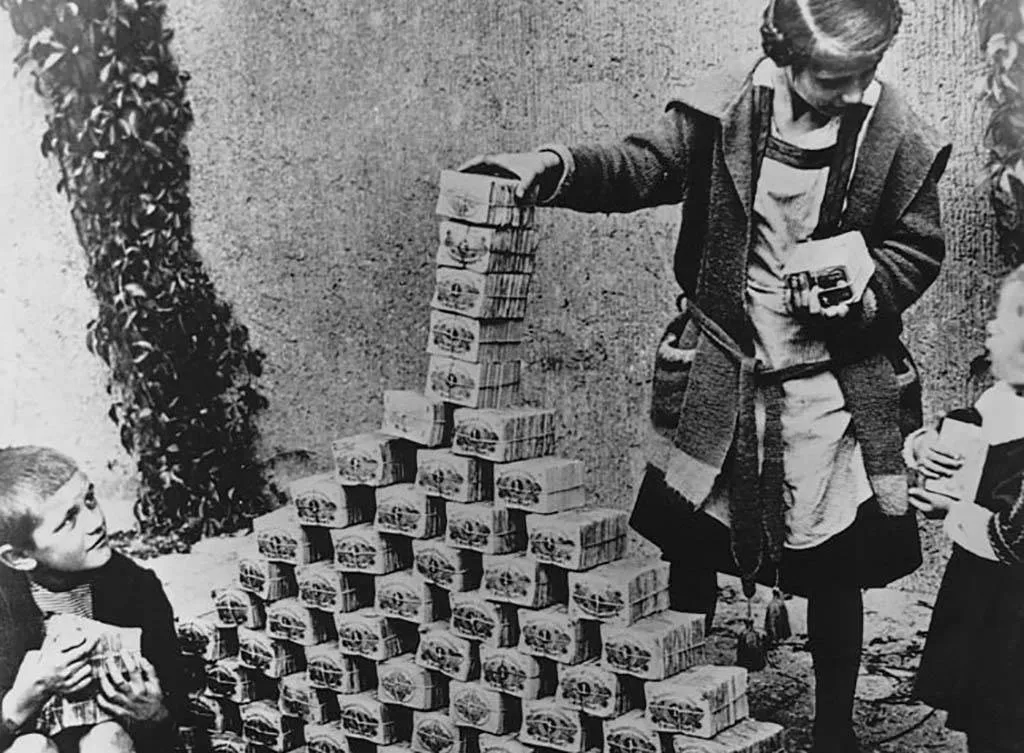
Between World War I and World War II, Germany's economy suffered greatly, with one of the biggest issues being hyperinflation. By this point, inflation was so bad that $1 US was worth 4.2 million DM, making paper money had become essentially worthless with people using it to fuel the fires in their hearth rather than use it to buy things.
For example, here are a group of young boys playing with them as though they are nothing more than playing cards. That's a lot of money to be playing with!
Quite The Collection

During the German army's ruthless campaign across Europe, they did far more than just take the land and people’s lives. They also took most anything worth value including looting museums and taking classic pieces of art and goods.
Pictured here, is an Allied soldier sifting through a stolen art collection that once belonged to the Axis officer Hermann Goering. He had taken these relics from all across Europe as his party expanded over the years.
Witnessing The Horrors
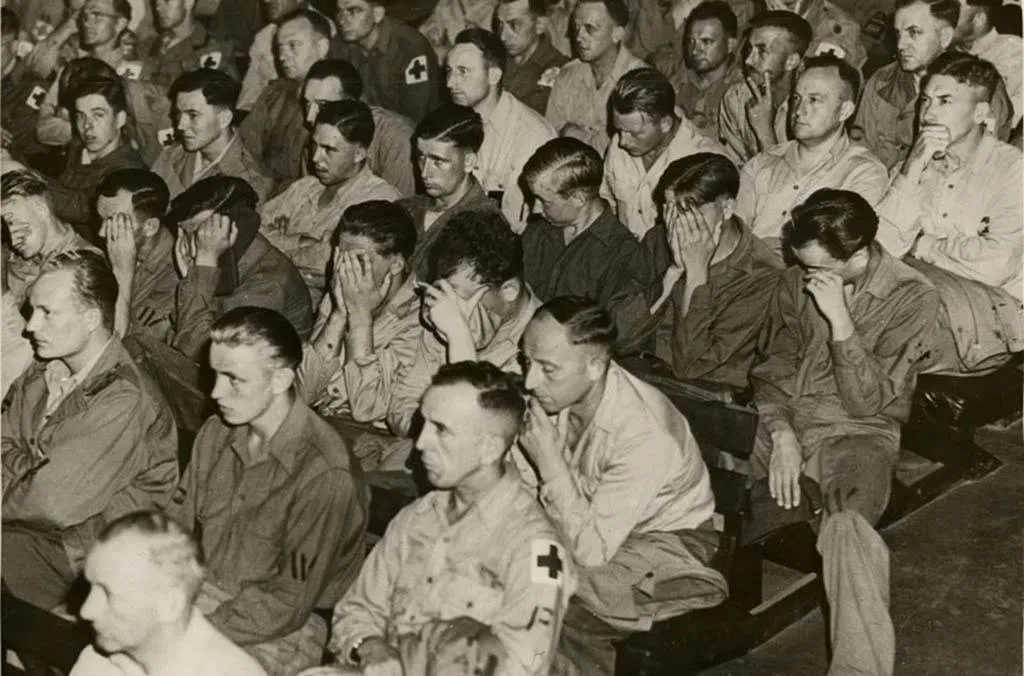
To see what was actually going on and the real reason that they were fighting, many British and American soldiers took it upon themselves to watch videos of the atrocities that had taken place in concentration camps.
It gave many of the soldiers a new meaning in their cause and a desire to fight harder than ever. Obviously, the films were painful to watch and left many of the Allied soldiers in tears.
Axis Soldiers Liked To Laugh Too
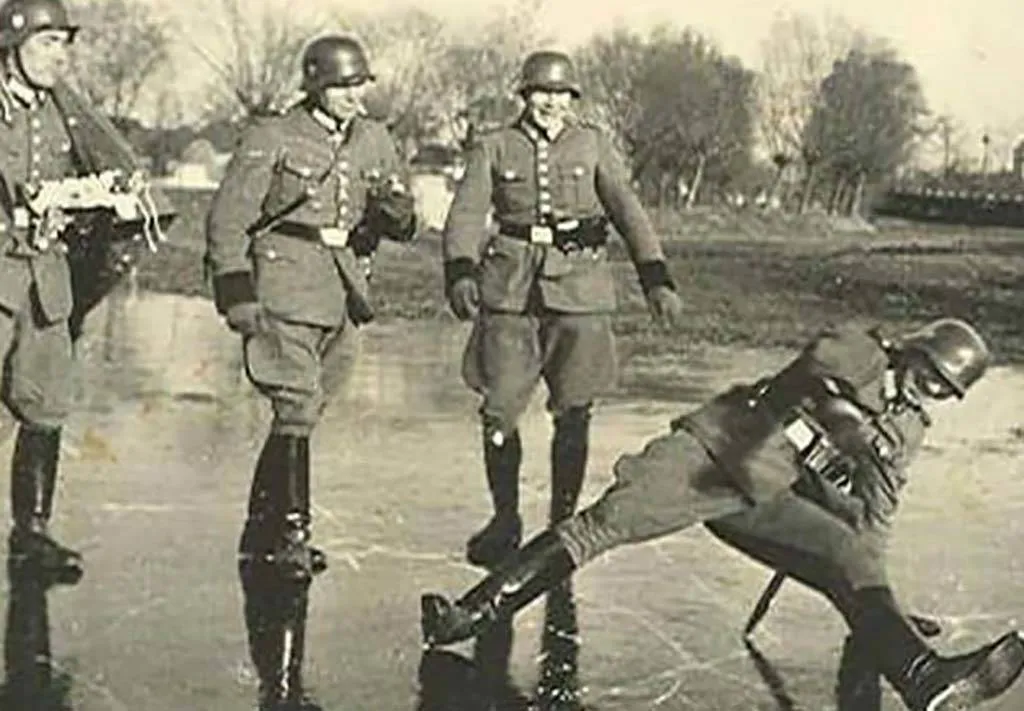
Although World War II is marked as a dark stain on human history and to have experienced it would have been terrible, soldiers still liked to have fun when they could.
In this photo, a group of Axis soldiers can be seen laughing at their friend who has slipped on the ice! As embarrassing as this situation might have been for him, the photo offers an interesting glimpse into history for us.
Knowing It Was Over
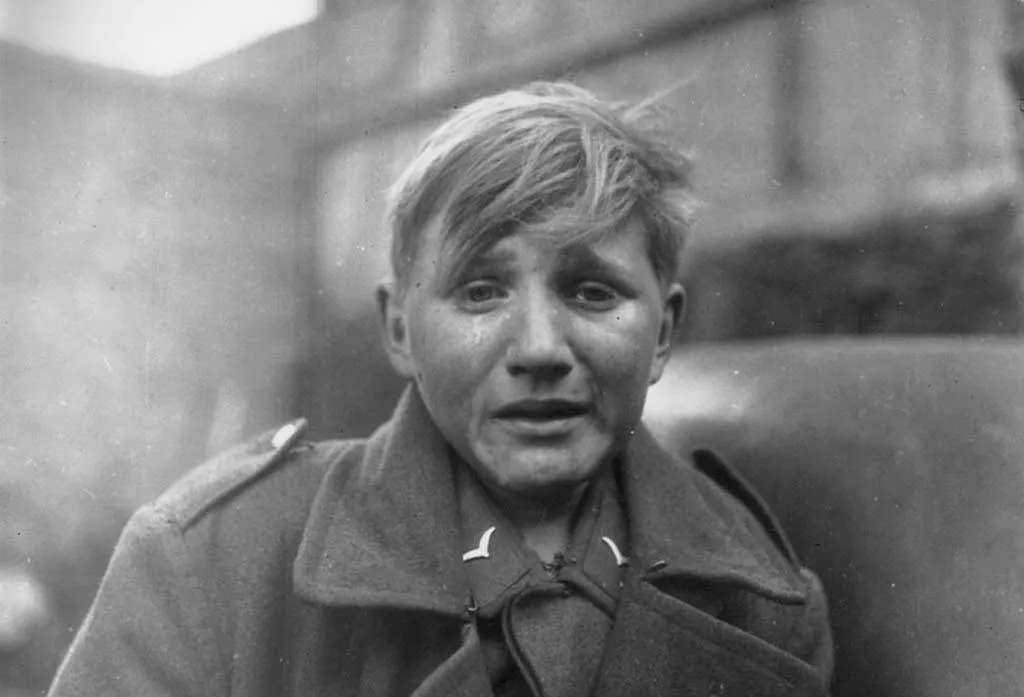
When Hitler came to the realization that the city of Berlin was finally going to fall to the Allies, he called in all of his reserve soldiers in a final effort to hold off the enemy.
Although he didn't partake in the fighting himself, during that time, he married his mistress, and the two went on to take their own lives in his bunker. This is an image of a young German soldier who has just been captured by the encroaching Allies.
Not The Enemies They Thought
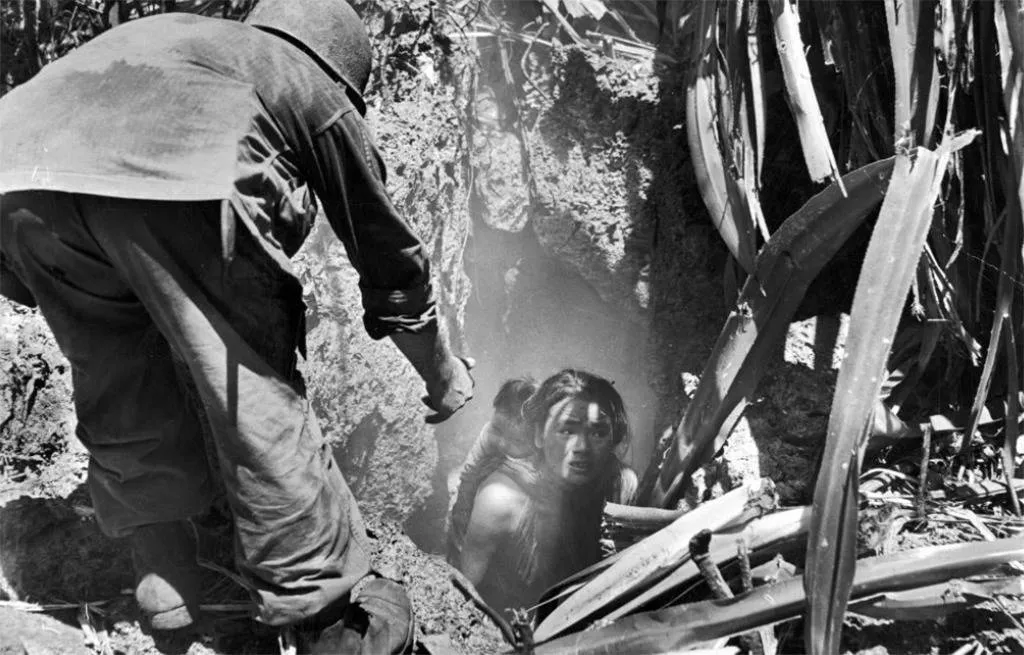
During World War II, the Japanese population was brainwashed by the government via mass propaganda campaigns that the US soldiers were cruel, evil, and violent. They were taught that they would kill them without a second thought and to both fear and hate them.
However, this rare image shows otherwise, featuring a young American soldier helping a Japanese woman and her baby from their hiding place once it was safe for them to reveal themselves.
The Hungarian Mini Tanks

Wartime is when some of the most significant strides in military technology take place, as there's no shortage of need for new and more effective weapons during a conflict. One of these new weapons was the Hungarian mini tanks.
While they may have seen as a good idea at the time, able to maneuver where regular tanks couldn’t, in the end, they proved to be ineffective, and they ceased to be produced. This is most likely because they were outgunned by larger tanks.
A New Way Of Life
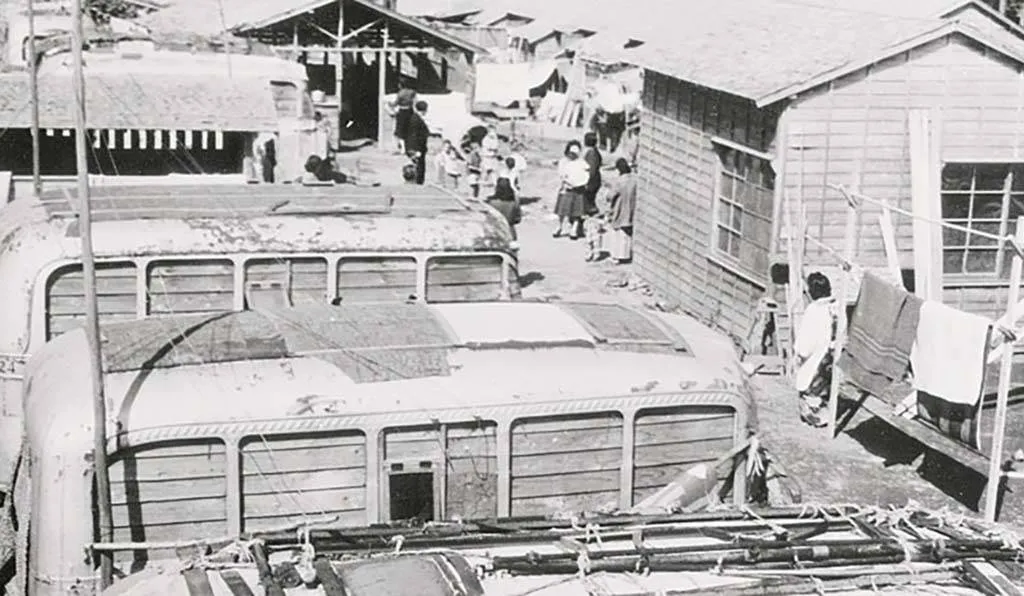
After the United States dropped the atomic bomb on Hiroshima and Nagasaki, life in Japan would change forever. The destruction of these bombs left countless dead and many of those who were lucky enough to live found themselves homeless.
With nothing left of their cities, its citizens had to survive by whatever means possible, even if it meant living out of broken-down buses in small communities. It would be years before many of these people got back on their feet.
Once A House

Adolf Hitler never shied away from anything that was fancy and new. At the height of his power, he could have just about anything his heart desired, which included numerous properties in his favorite places throughout Europe.
One of these was his famous estate in the Berchtesgaden hills. While it looked grand at one point, it was eventually reduced to rubble by American bomber planes. Shown above is what remained by the end of the war.
Aleksandra Samuskemo Was As Brave As They Come
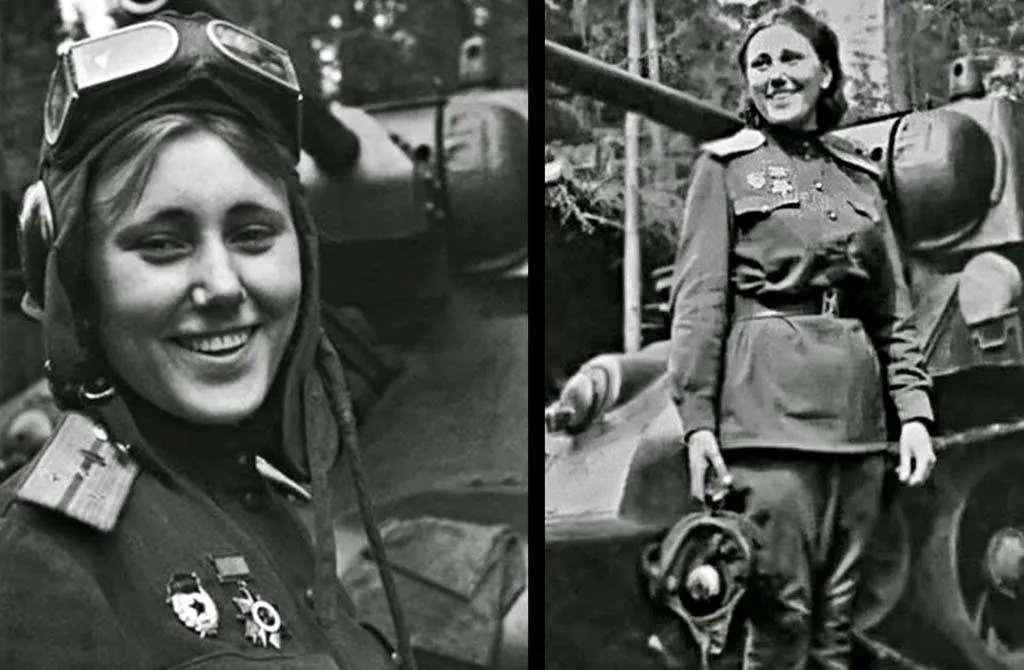
Aleksandra Samusenko was a Soviet T-34 tank commander and a liaison officer during World War II. She was the only female tanker in the 1st Guards Tank Army and was awarded the Order of the Patriotic War 2nd and 1st class.
She also earned the Order of the Red Star, which she received from bravery in the Battle of Kursk. During the fighting, she maneuvered her tank crew out of a deadly ambush, saving numerous lives.
Failed Kamikaze Attack
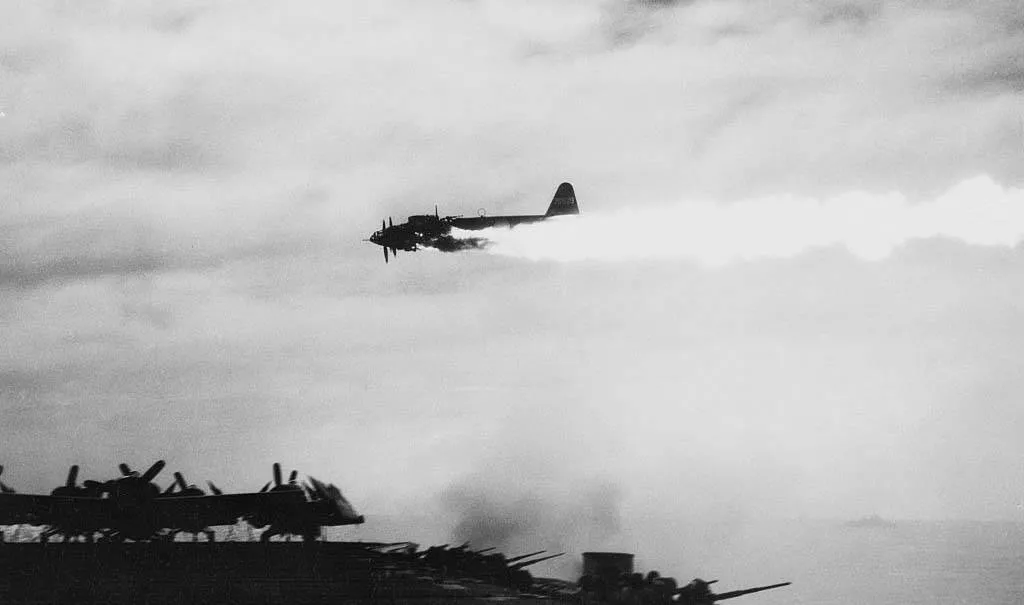
Kamikaze attacks by Japanese pilots were a frequent tactic used by the Japanese in the Pacific Theater, which involved a pilot crashing their plane into a structure or boat with themselves inside. However, kamikaze pilots weren't always that effective.
Historians assume that only around 19% of kamikaze attacks were successful. Featured is a failed kamikaze attack, with the plane being shot out of the sky by naval forces before it could hit its target.
A Strange Bear
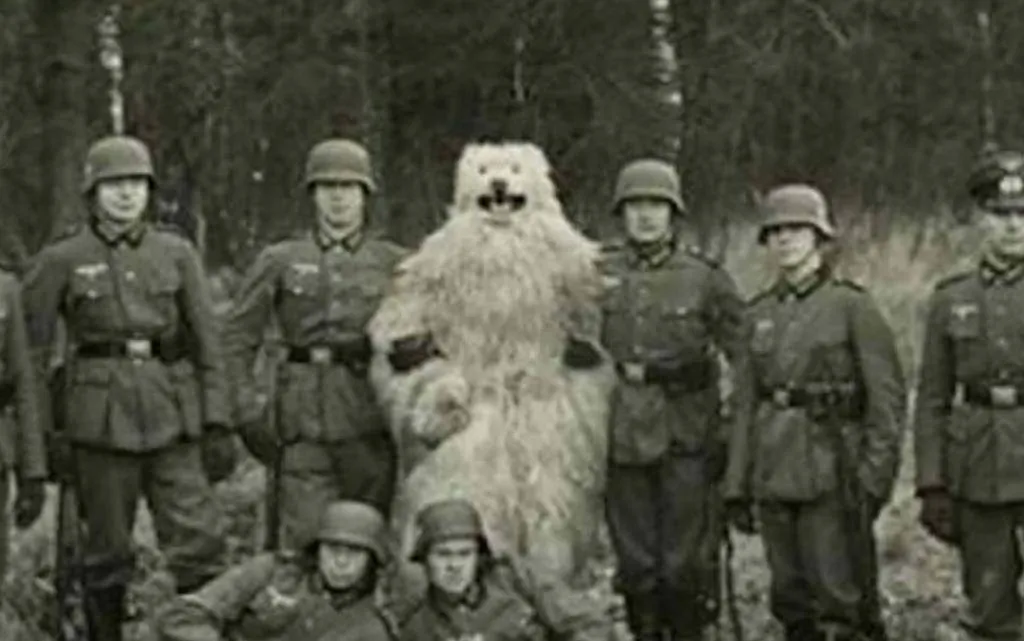
This is one of the many photos taken of a man in a bear suit that went around taking pictures of himself in Germany. In Germany, between the 1920s and the 1960s, a collection of photos were found featuring a wide range of people posing with a bear.
The story goes that two friends wanted to make some money and stay warm in the winter, so they dressed up as bears where people could pay a small fee to snap a photo of them.
The Burning Of A Concentration Camp
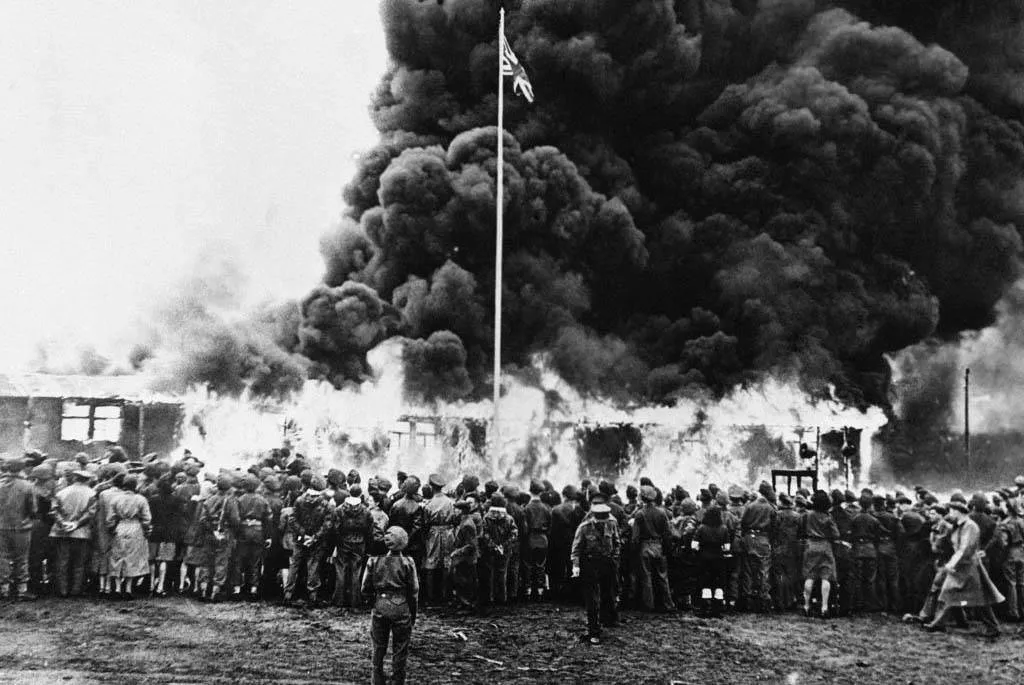
When allied soldiers were confronted with concentration camps, they were at a loss for words. They didn't think that humans were capable of such evil, let alone that it was occurring without their knowledge.
Many of the camps were in such bad condition that they had no choice but to burn them down after saving as many living people left as they could. Here, Allied soldiers watch as the Bergen-Belsen camp is being burned because it was infested with disease.
Smiling Up Until The End

Georges Blind was a French man who was a member of the French resistance during World War II. He was arrested by an Axis patrol on October 14, 1944, and was taken to a camp in Schirmeck, Alsace, on October 24.
There, he was involved in multiple mock executions to get him to talk. In the photo, he can be seen smiling even though he could be shot by a firing squad at any second. However, he was not killed by a firing squad, and the exact cause of his death remains unknown.
Finding A Fellow-Soldier's Grave
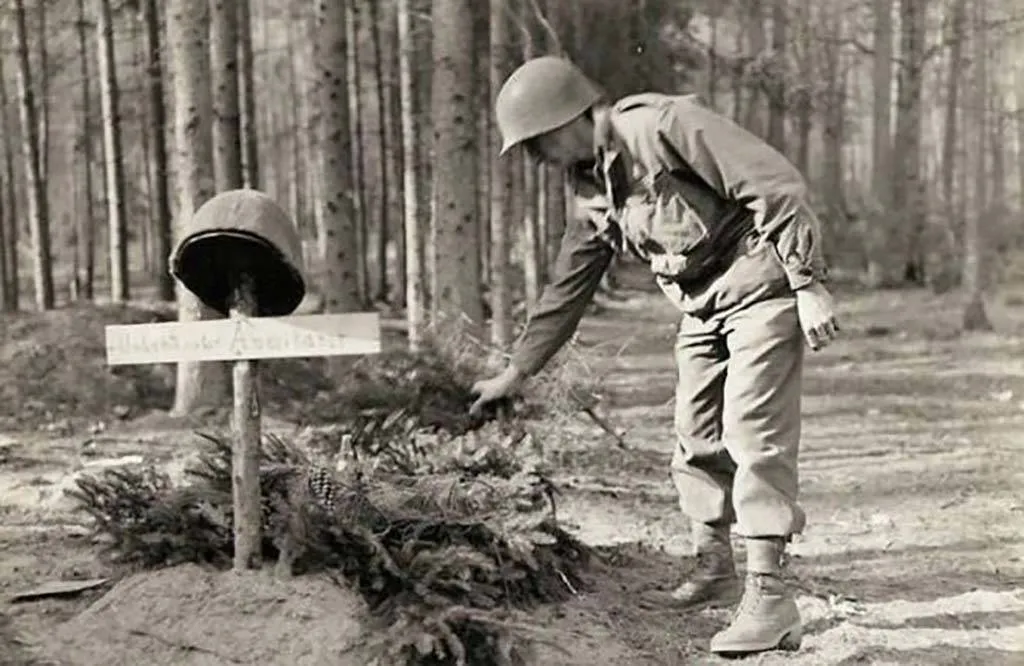
The soldiers on both sides of World War II saw things that they could have never imagined. Both sides lost countless lives, with the war being worse than ever thought. However, one thing that this Allied soldier never expected to find was the grave of a fellow soldier.
Yet, what made it unusual is that the enemy had buried the unknown soldier. On top of the grave that was dug, the soldier added a wreath.
The Aftermath Of D-Day

On June 6, 1944, otherwise known as D-Day, 156,000 Allied troops stormed the beaches of France to liberate the country and begin beating back the Nazis. Here is an image of surviving troops as they figure out what to do with the German prisoners they had just taken.
Although there was an incredible loss of life on both sides, it was one of the most successful battles for the Allies and marked a changing of the tide of the war.
The Men That Captured The War

Although many of the photographs taken during World War II turned out in black-and-white, that wasn't always necessarily the case. Years after the war had ended, photographs were colorized to show what life during the war was really like.
The photographers here can be seen posing with their cameras as they prepared to board their plane to take shots of the war that would be taking place below. Photographers such as these allow us to see just how destructive the war was.
Bears Weren't Unusual In Russia
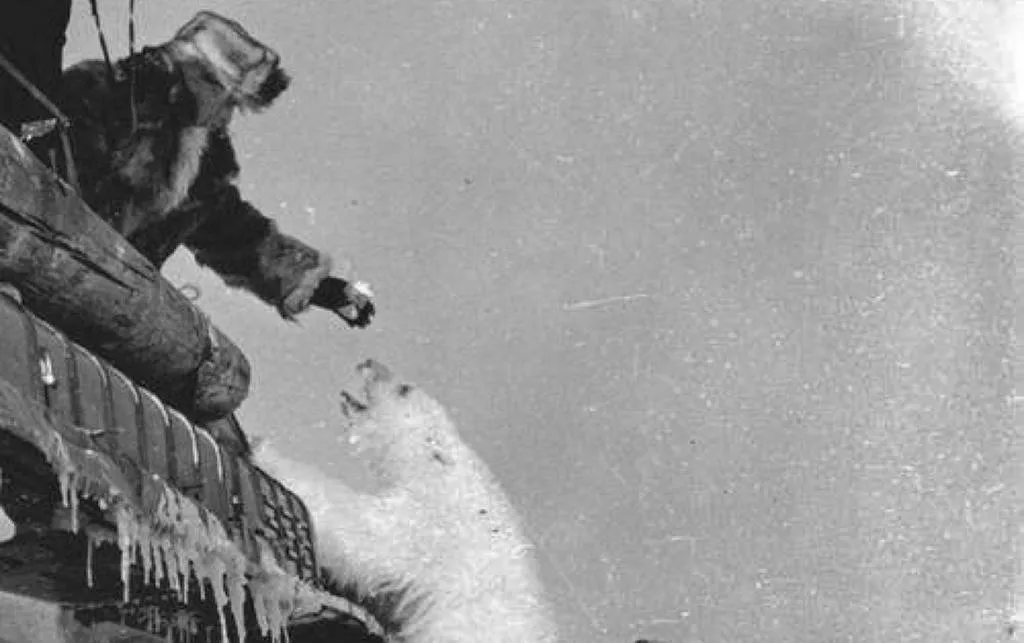
While fighting was taking place all of Europe, some tend to forget that there was also fighting occurring in the frozen lands of Russia. Here is a snapshot of a Russian tank driver taking the opportunity to feed polar bear cubs.
While the Russians were used to this kind of climate, the Germans were not, which resulted in numerous hard losses as they tried to invade the country. Maybe they should have fed the polar bears!
A Well-Deserved Break
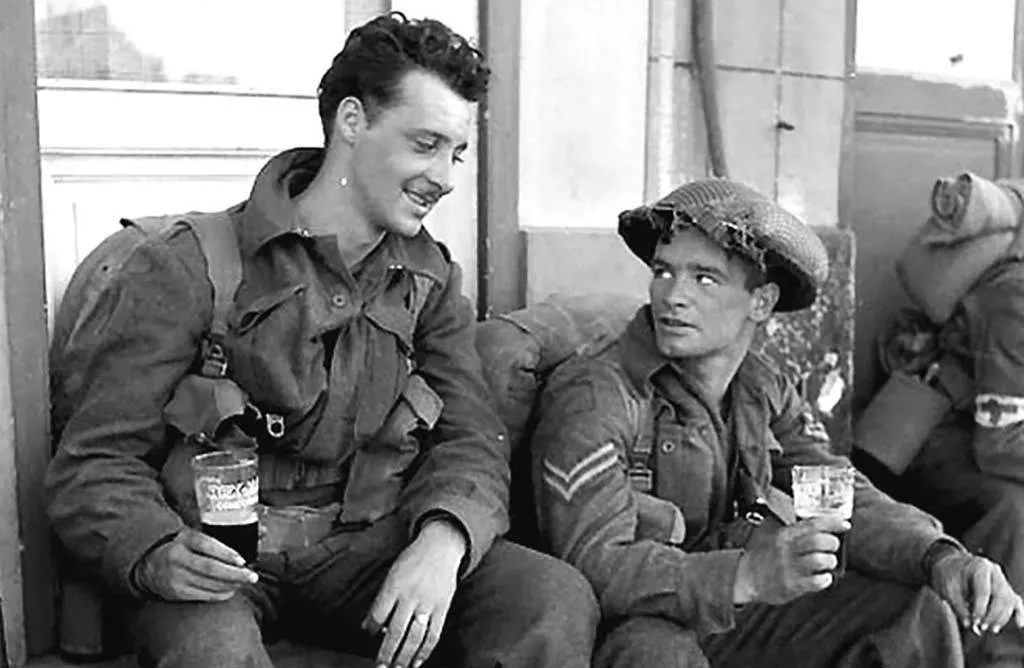
On February 4, 1945, Allied forces successfully liberated Belgium from Axis occupation. Although it didn't mean that the war was over, it gave the soldiers a brief time to relax and enjoy their success.
Pictured are two Canadian soldiers enjoying a brief moment of peace. Moments like this were rare during the war, so soldiers knew to live it up when they had the chance, just like these two men.
More Than You Can Count

Although it may have seemed like the Germans had the upper-hand for the majority of the war in Europe, toward the end, the tables had certainly turned. This is an image of thousands of German prisoners of war taken on August 21, 1944, in Nonant-le-Pin, France.
By this point, the Allies had so many prisoners of war on their hands that they didn't even know what to do with them, which is clearly shown here with them all crowded into one place.
Quite The Weapon

The terrifying German railway guns such as the Schewer Gustav were built with the intention of destroying many of France's most important forts that rested on the French Maginot Line.
On average, they weighed around 1,350 tons and were mobilized on railroad tracks with the ability to shoot at targets as far as 29 miles away. Unfortunately, for the Germans, it wasn’t the fastest weapon to reload, and could only fire one shell every 30 to 45 minutes.
Captured Railway Gun

Although the German railway guns may have been an extremely formidable weapon, they weren't invincible, and their size made them a target for Allied forces. Here, American troopers can be seen proudly standing on top of a captured railway gun.
Easily one of the German’s biggest weapons, they were sorely disappointed when they learned that it had fallen into the enemy’s hands. Now, the railroads and the forts in France were safe, for the most part.
Getting Into Fighting Shape
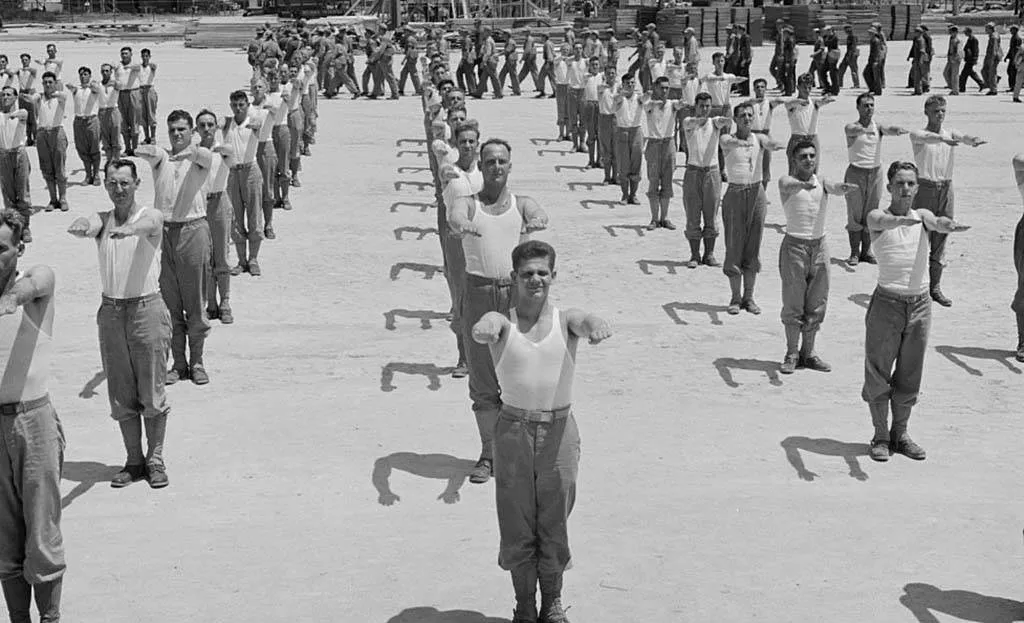
Just over a year after the attack on Pearl Harbor, the United States passed the Selective Training and Service Act of 1940. The act required all men between the ages of 18 and 45 to register for the military draft.
However, men weren't just sent straight into the thick of the fighting. They had to be properly trained and in shape enough to prepare themselves for the physicality involved in warfare. Here, men can be seen training at a boot camp.
A Sight For Sore Eyes
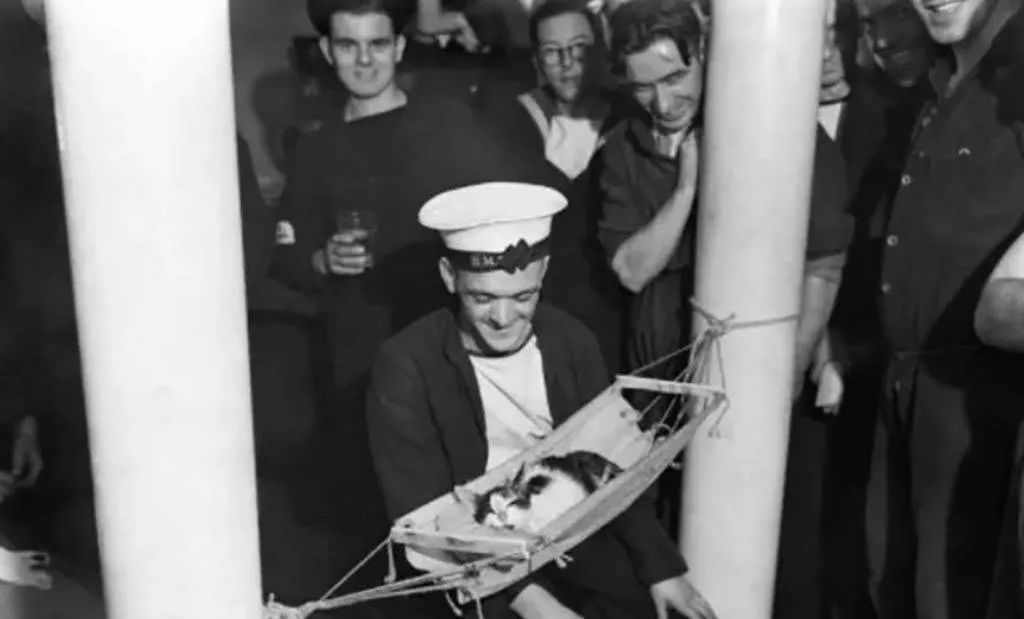
Unfortunately, in almost all combat situations, stray animals can be found all over the place. So, it isn't uncommon for soldiers to take them for their own as pets. Not only are they helping the animal, but it also helps to boost troop morale, keep them preoccupied, and take their mind off the constant danger.
These sailors found themselves a kitten and fashioned a little hammock for it to sleep in. You can tell by the looks on their faces that this was a sight for sore eyes.
When The Unthinkable Happens
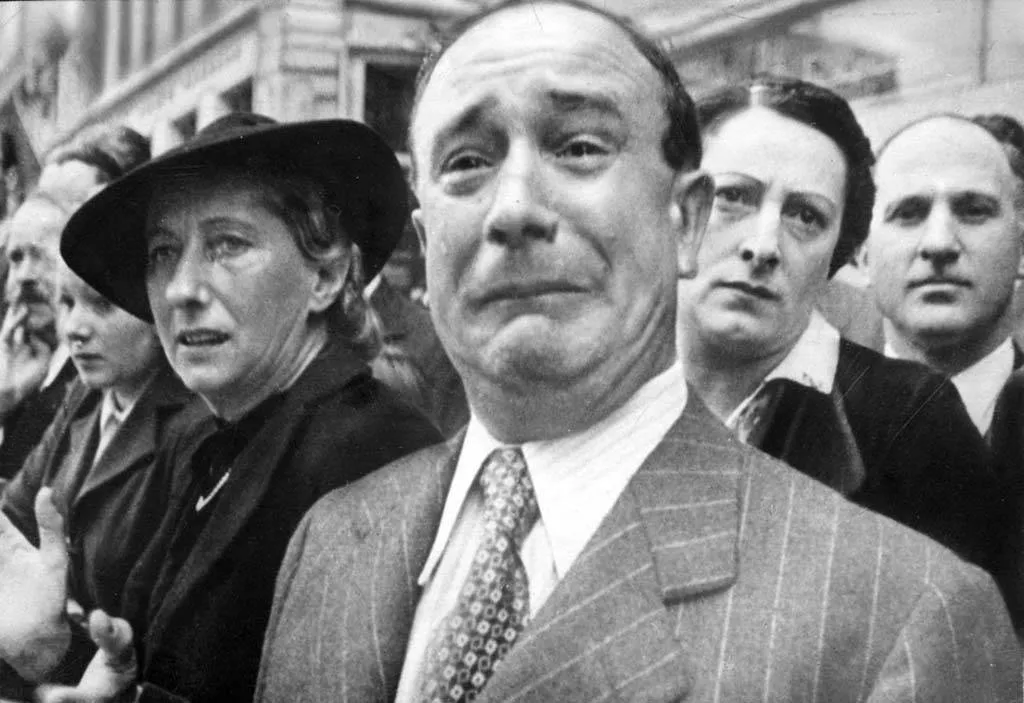
It's human nature for people to think that nothing bad will happen to them until it finally does. This is most likely what many of the citizens of Paris were thinking before Axis tanks were driving into their city.
This is an image of a man who just realized that his hometown of Paris had finally fallen to the Nazis and was now under their control. It’s an impactful look of shock and disbelief that’s hard to forget.










